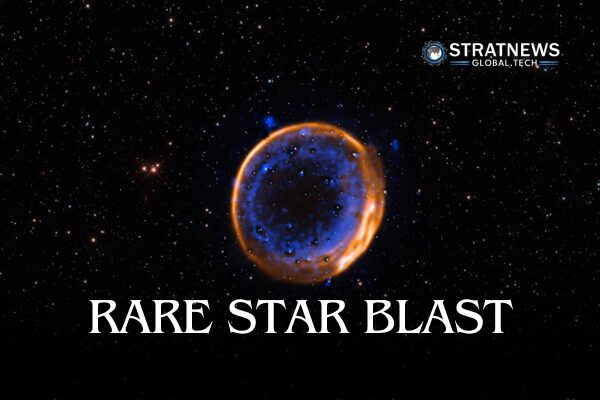Rare Double Detonation Supernova Captured for the First Time
Astronomers have captured the first photographic evidence of a rare double detonation supernova. Using the European Southern Observatory’s Very Large Telescope in Chile, researchers observed a white dwarf star exploding in a powerful double blast, helping to reveal the secrets of star death and element formation.
How the Double Explosion Unfolded
Unlike the more common supernovae involving massive stars, this rare event featured a white dwarf. A white dwarf is a dense, burnt-out star roughly the mass of our sun. Located 160,000 light-years from Earth in the Large Magellanic Cloud, the star exploded about 300 years ago.
This supernova, called a Type Ia supernova, happens when a white dwarf interacts with a close companion star. The white dwarf’s gravity pulls helium from its neighbour. This helium becomes so hot and dense that it detonates, sending a shockwave through the star and igniting its core. The second explosion then destroys the white dwarf entirely.
“Nothing remains. The white dwarf is completely disrupted,” said Priyam Das, the lead author from the University of New South Wales Canberra.
The time between the first and second explosions is short. “It’s only about two seconds,” explained astrophysicist Ivo Seitenzahl from the Australian National University.
Revealing the Cosmic Cycle of Elements
The researchers used the Multi-Unit Spectroscopic Explorer (MUSE) on the Very Large Telescope to map the chemical elements left after the explosion. The image shows two concentric shells of calcium expanding outward: an outer ring from the first blast and an inner ring from the second. A shell of sulphur was also detected.
“These two calcium shells are the perfect smoking-gun evidence of the double-detonation mechanism,” Das said.
Type Ia supernovae play a key role in cosmic chemistry. They produce heavier elements like calcium, sulphur and iron, essential for the formation of planets and life. “This is essential for understanding galactic chemical evolution,” Das added.
Iron, a key component of Earth and human blood, is among the elements created in such stellar explosions.
A Beautiful Glimpse into Star Death
While the event marks the death of a star, it also shows the creation of elements that build worlds. “We are seeing the birth process of elements in the death of a star,” Seitenzahl said.
The Big Bang created only hydrogen, helium, and lithium. It is in supernovae like this that heavier elements are made and spread across galaxies, continuing the cosmic cycle of matter.
“It’s beautiful,” Seitenzahl remarked, reflecting on the image’s scientific and aesthetic value.
with inputs from Reuters


